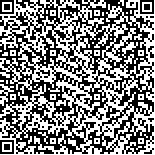郭婧,恽晓平,张瑜,等.眼动追踪测试与脑卒中后认知功能障碍的相关性研究[J].中华物理医学与康复杂志,2024,46(10):880-886
扫码阅读全文

|
| 眼动追踪测试与脑卒中后认知功能障碍的相关性研究 |
|
| |
| DOI:10.3760/cma.j.issn.0254-1424.2024.10.003 |
| 中文关键词: 眼动追踪测试 脑卒中 认知功能 认知评估量表 |
| 英文关键词: Eye tracking Stroke Cognition Cognitive assessment scales |
| 基金项目:江苏省老年健康科研课题(LKM2022051);2023年常州市第三批科技计划项目(CJ20230060) |
|
| 摘要点击次数: 2559 |
| 全文下载次数: 3690 |
| 中文摘要: |
| 目的 分析眼动追踪测试与脑卒中后认知功能障碍的相关性。 方法 选取符合入选和排除标准的脑卒中患者40例,设为脑卒中组;另选取无脑卒中病史的正常受试者20例,设为正常组。采用眼动追踪测试、简易精神状态检查量表(MMSE)、蒙特利尔认知评估量表(MoCA)分别评估和比较2组受试者的认知功能,并采用Pearson相关性分析检验脑卒中组眼动追踪测试结果与其年龄、受教育程度、MMSE和MoCA评分的相关性。 结果 静态图片测试和正向眼跳测试结果中,脑卒中组的注视点总数分别为(19.80±16.78)个和(19.59±20.59)个,均显著多于正常组,差异均有统计学意义(P<0.05);动态路径测试、眼动肌测试和反向眼跳测试结果中,2组受试者的总注视时长、注视时长比和注视点总数组间比较,差异均有统计学意义(P<0.05)。静态图片测试结果中的注视点总数与MMSE评分呈弱负相关;总注视时长和注视时长比与MoCA评分呈弱正相关;注视点总数、扫视总距离和扫视平均速度与MoCA评分呈弱负相关。动态路径测试结果中的总注视时长与MMSE评分MoCA评分呈正弱相关;注视时长比与MMSE评分和MoCA评分呈正负相关;首视点注视时长与MoCA评分呈正弱相关;注视点总数与年龄呈弱正相关,与MoCA评分呈弱负相关;扫视总距离与年龄和MoCA评分呈弱负相关;扫视平均速度与MMSE评分和MoCA评分呈负弱相关。眼动肌测试结果中的总注视时长和注视时长比与MoCA评分呈弱正相关;注视点总数、扫视总距离和扫视平均速度与MoCA评分呈弱负相关。正向眼跳测试结果中的总注视时长和注视时长比与MoCA评分呈弱正相关;注视点总数与年龄呈弱正相关,与MoCA评分呈弱负相关;扫视总距离与MMSE评分和MoCA评分呈弱负相关性;扫视平均速度与MMSE评分和MoCA评分呈弱负相关。反向眼跳测试结果中的总注视时长与年龄和MoCA评分呈弱正相关;注视时长比与年龄和MoCA评分呈弱正相关;注视点总数与年龄呈弱正相关,与MoCA评分呈弱负相关;扫视总距离和扫视平均速度与MoCA评分呈弱负相关。 结论 眼动追踪测试的结果与脑卒中后认知障碍具有显著的相关性,可考虑将其用于脑卒中后认知功能障碍的评估。 |
| 英文摘要: |
| Objective To document any correlation between eye-tracking test results and cognitive impairment after a stroke. Methods Forty stroke survivors made up the stroke group, while 20 healthy subjects without a history of stroke formed the normal group. Everyone was given an eye-tracking test, the mini-mental state examination (MMSE), and the Montreal Cognitive Assessment (MoCA). The eye-tracking test results were then tested for any correlation with age, level of education, and the MMSE and MoCA scores. Results In the static image test and the prosaccade test, the total number of fixations was significantly higher in the stroke group than in the normal group. In the dynamic path test, the ocular motor test and the anti-saccade test, significant differences were observed between the two groups in terms of the duration of total fixation, the fixation duration ratio, and the total number of fixations. In the static image test, the total number of fixations was weakly negatively correlated with the MMSE scores. Total fixation duration and fixation duration ratio were weakly positively correlated with the MoCA scores, while total number of fixations, total saccade distance and average saccade velocity were weakly negatively correlated with the MoCA scores. In the dynamic path test, total fixation duration was weakly positively correlated with the MMSE and MoCA scores. Fixation duration ratio was weakly positively correlated with the MMSE scores and weakly negatively correlated with the MoCA scores. First fixation duration was weakly positively correlated with the MoCA scores. The total number of fixations was weakly positively correlated with age and weakly negatively correlated with the MoCA scores. Total saccade distance was weakly negatively correlated with age and the MoCA scores, and average saccade velocity was weakly negatively correlated with the MMSE and MoCA scores. In the ocular motor test, total fixation duration and fixation duration ratio were weakly positively correlated with the MoCA scores. Total number of fixations, total saccade distance, and average saccade velocity were weakly negatively correlated with the MoCA scores. In the prosaccade test, total fixation duration and fixation duration ratio were weakly positively correlated with the MoCA scores. Total number of fixations was weakly positively correlated with age and weakly negatively correlated with the MoCA scores. Total saccade distance and average saccade velocity were weakly negatively correlated with both the MMSE and MoCA scores. In the anti-saccade test, total fixation duration was weakly and positively correlated with age and the MoCA scores. Fixation duration ratio was weakly and positively correlated with age and the MoCA scores. The total number of fixations was weakly positively correlated with age and weakly negatively correlated with the MoCA scores, and total saccade distance and average saccade velocity were weakly negatively correlated with the MoCA scores. Conclusions Eye-tracking test results are significantly correlated with post-stroke cognitive impairment, suggesting that such tests can be used in the assessment of post-stroke cognitive dysfunction. |
|
查看全文
查看/发表评论 下载PDF阅读器 |
| 关闭 |
|
|
|